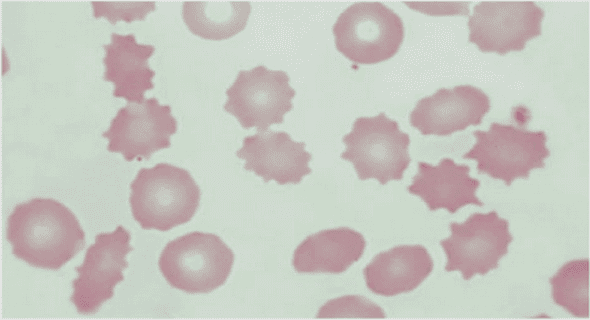(Downloads - 0)
For more info about our services contact : help@bestpfe.com
Table of contents
CHAPTER I. BIBLIOGRAPHIC INTRODUCTION
THESIS CONTEXT
A. THE BIOSYNTHESIS OF TERPENES IN PLANTS
1. The place of terpenes in plant metabolism
2. A focus at the sesquiterpene pathways
a) The terpene synthase family is responsible for the scaffold synthesis
b) CYP enzymes
c) Other decorative enzymes
3. The choice of hernandulcin as target
B. THE RECOMBINANT PRODUCTION OF SESQUITERPENES
1. Common strategies applied in metabolic engineering
a) Control at the nucleic acid level
b) Control at the protein level
c) Other strategies
d) The shift induced by synthetic biology
2. The rise of metabolic engineering in S. cerevisiae for the production of sesquiterpenes
a) The native sterol pathway in S. cerevisiae
b) The case study of hydrocortisone metabolic engineering, derived from the sterol pathway
c) A second case study applied to sesquiterpene production, the artemisinin semi-biosynthetic production
d) Recent improvements in the engineering strategies for sesquiterpene production in S. cerevisiae
e) Metabolic engineering and synthetic biology access to new to nature products
CHAPTER II. SYNTHETIC DERIVATIVES OF THE (+)-EPI-Α-BISABOLOL ARE FORMED BY MAMMALIAN CYTOCHROMES P450 EXPRESSED IN A YEAST RECONSTITUTED PATHWAY.
A. INTRODUCTION
B. MATERIALS AND METHODS
1. Materials
2. Microbial strains
3. CYP library
4. Plasmid construction
5. Plasmid transformation and integration of DNA cassettes in yeast
6. Strain culture conditions and sampling
7. Metabolite extraction and analytical detection of the sesquiterpenes
8. Enzymatic assays with CYP microsomal fractions
9. Isolation and characterization of the bisabolol oxidation products
C. RESULTS
1. Building an efficient chassis strain for screening (+)-epi-α-bisabolol hydroxylation by CYPs
2. In vivo screening of the CYP library in the engineered strain
3. In vitro activities of the human CYPs with (+)-epi-α-bisabolol, farnesol and nerolidol
4. Structural characterization of some (+)-epi-α-bisabolol derivatives
a) Improving (+)-epi-α-bisabolol production in chassis strain
b) (+)-epi-α-Bisabolol in vivo concentration influences the oxidized metabolite production
c) Product purification and structure determination
D. DISCUSSION
E. CONCLUSION
F. SUPPORTING INFORMATION
G. ADDITIONAL INVESTIGATIONS AROUND THE SYNTHESIS OF (+)-EPI-Α-BISABOLOL DERIVATIVES FORMED BY CYPS EXPRESSED IN AN OPTIMIZED YEAST CHASSIS STRAIN
1. Material and methods
2. Results and discussion
a) Further characterization of oxidized (+)-epi-α-bisabolol products and attempts to purify them
b) Towards a finer regulation of the heterologous (+)-epi-α-bisabolol production in yeast
c) Supplementary inputs of enzymatic assays
d) Further diversification of α-bisabolol derivatives generated in S. cerevisiae
1) Using plant CYPs involved in sesquiterpene metabolism
2) ADHs
3) The use of BBS generating other α-bisabolol isomers
3. Conclusion
CHAPTER III. CHARACTERIZATION OF CYP2B6 / CYP2B11 CHIMERAS WITH (-)-Α-BISABOLOL AND TRANS,TRANS-FARNESOL
A. INTRODUCTION
B. MATERIALS AND METHODS
C. RESULTS AND DISCUSSION
CHAPTER IV. GLYCOSYLATION OF Α-BISABOLOL AND HERNANDULCIN
A. OVERVIEW OF UDP-GLYCOSYLTRANSFERASE DIVERSITY
1. Plant UDP-glycosyltransferases (UGTs)
2. Human UDP-glucuronosyltransferases
B. MATERIAL AND METHODS
1. Strains and plasmids
2. Culture conditions and sampling
a) A. strigosa UGT93B16 production
b) Human UDP-glucuronosyltransferases
3. In vitro glycosylation assays
C. RESULTS AND DISCUSSION
1. UGT93B16: a catalyst for the glucosylation of sesquiterpenes
a) UGT93B16 assays from E. coli expression
b) Bioconversion of sesquiterpenes
1) In E. coli
2) In S. cerevisiae
c) UGT93B16 expression in an engineered yeast producing (+)-epi-α-bisabobol
d) Perspectives
2. Human UDP-glucuronosyltransferases are able to convert (-)-α-bisabolol and (±)-hernandulcin
a) In vitro assay with Supersomes™ microsomal fractions
b) Attempts to reconstruct a functional pathway in yeast
c) Perspectives
CONCLUSION
CONCLUSION AND PERSPECTIVES
1. Towards in vitro cascades to prototype new pathways
2. Possible extension of the approach to other enzyme classes
3. The coupling of CYP and UGT steps
4. The biological activities of the new molecules
REFERENCES
APPENDIX
A. SUPPLEMENTARY FIGURES
B. SUPPLEMENTARY TABLES
C. DNA SEQUENCES
1. Synthetic fragments of the additional CYPs
2. Synthetic fragments corresponding to the tested ADHs
3. Synthetic fragments of the supplementary BBS
4. Coding sequence of UGT93B16
5. Synthetic fragments corresponding to TEF1 promoter and coding sequence of Rattus norvegicus UGDH
6. Synthetic fragments of the human UGTs active with (±)-hernandulcin and (-)-α-bisabolol
7. Synthetic fragments of UDP-GlcA transporters
D. LIST OF FIGURES
E. LIST OF TABLES
F. ABBREVIATIONS



